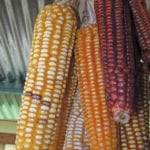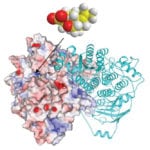
Tag Archives Did you Know

Calling all plant cells
Internal communication system aids and guides plant development, researchers say

Corn that finds its own nitrogen
Researchers have known about it since the 1980s but were only recently able to analyze it

Reach for the top
It’s not just soil microbes that set crops up for success — it’s the right ones

Climate taxes could fuel food insecurity
The impact could easily outstrip the effects of a changing climate itself

Omega-3 supplements not so heart healthy?
But they might make the kids behave better

Neutralizing weeds’ defence system
Researchers identify a new mechanism to battle herbicide resistance

Swapping crops
Growing crops other than rice could save water and improve nutrition

Barley not barium
The familiar cereal crop can also be an imaging agent for medical tests

Rice’s nutritional value decreases in higher CO2 concentrations
Researchers examine how climate change can impact dietary quality of crops

How wheat can root out the take-all fungus
A team of young researchers has now pinpointed a way of easing cereals’ risks from a deadly root pathogen


